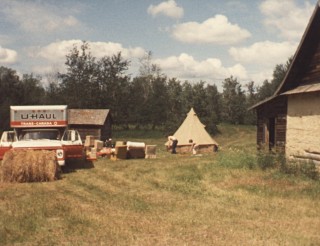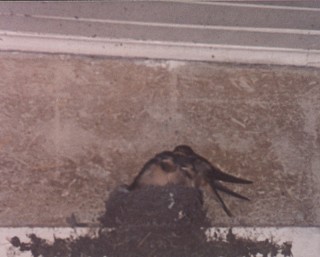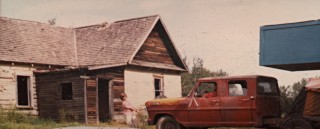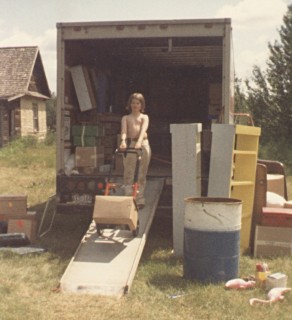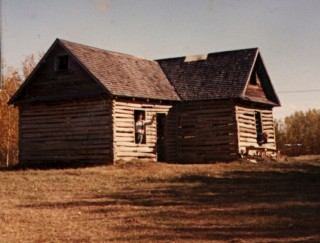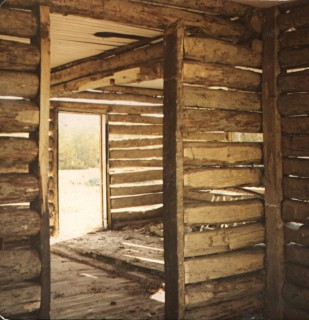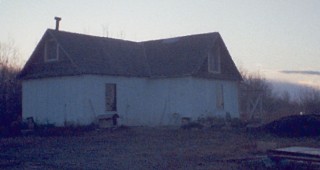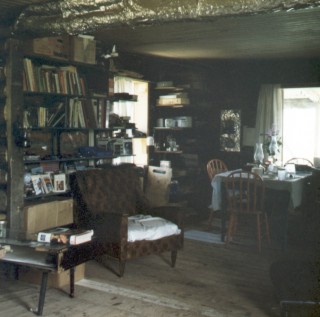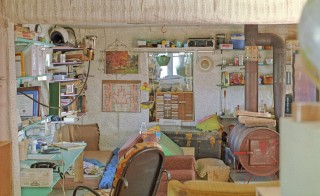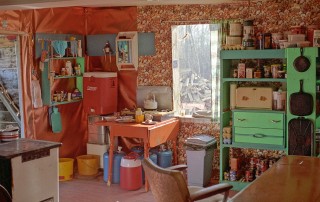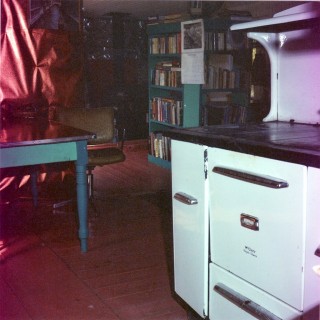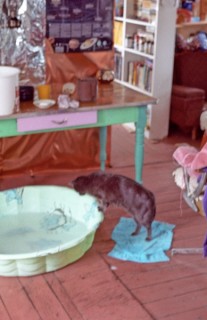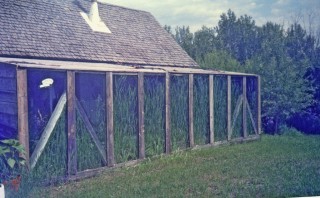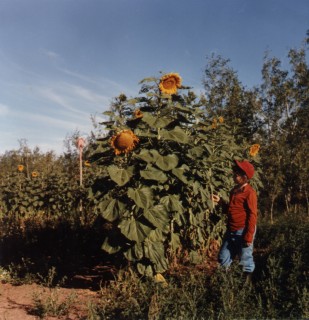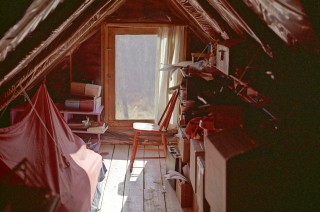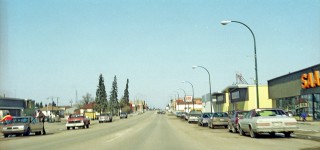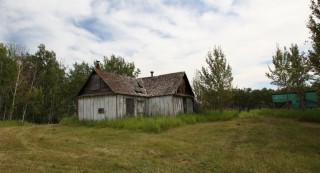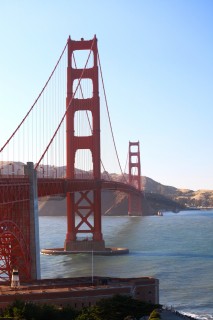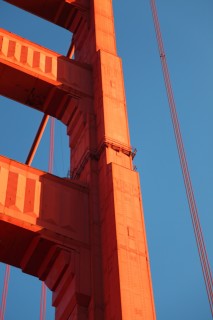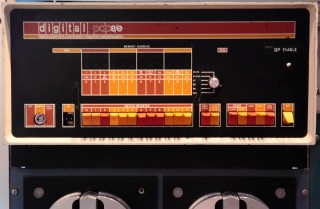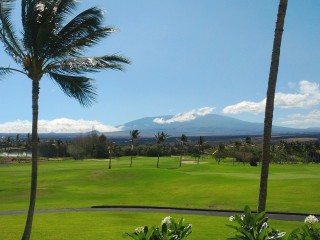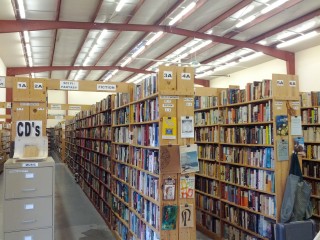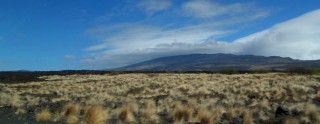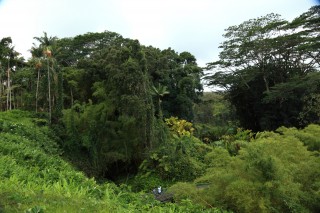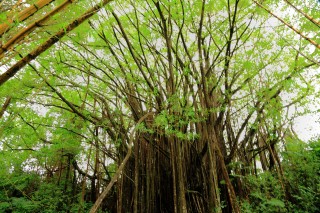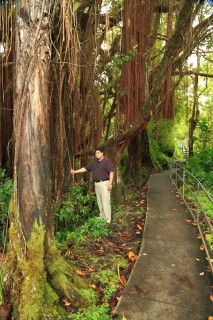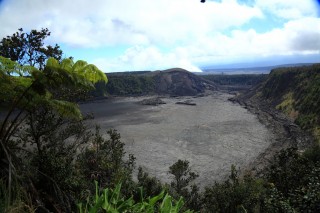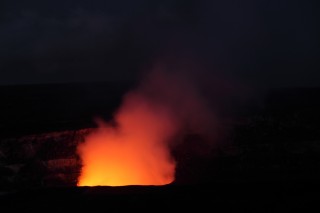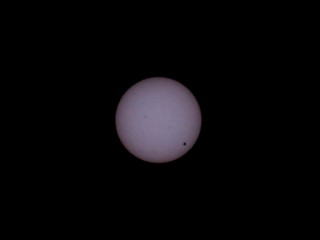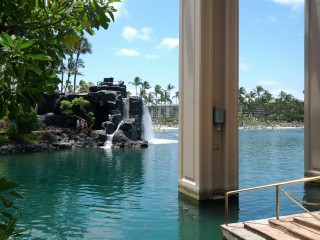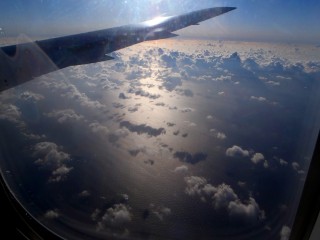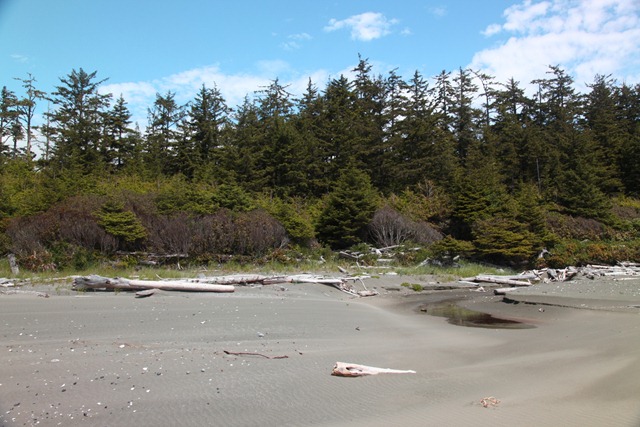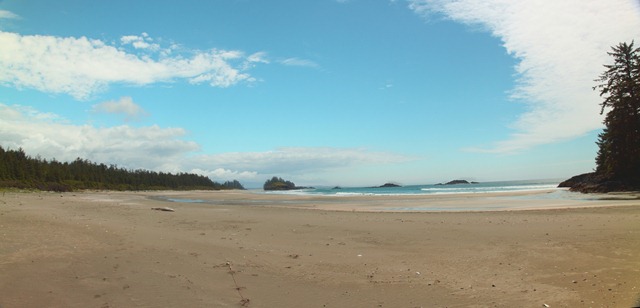Life on (our) farm
People seem to be amused when I tell tales of my life in Manitoba, so I thought I’d post a more detailed account with photos.
In the early 1980s my parents purchased 80 acres in rural Manitoba, with an ancient log cabin on it, and we moved there. I think we stayed for most of three years, and then again for a couple more years in the early 1990s. Today I’ll just talk about the somewhat rustic living conditions I had the pleasure of experiencing.
The cabin was a small three-room affair built of logs and insulated with a mixture of mud, straw and manure, which was common in the pioneer days (judging by what the neighbors told us, this cabin was probably built around 1900, give or take a couple of decades). The attic was of slightly more modern construction, having wooden shingles, a cut lumber frame and adding a finished wood ceiling to the ground floor. It hadn’t been lived in for a long time when we arrived; the windows and doors were long gone and birds were nesting inside.
These photos, taken when we were unloading our moving truck, give some idea of what it looked like and the finish on the walls:
The first thing we (meaning my father) did to make the place habitable was to knock out all the mud insulation
and then fill in the gaps with modern insulation, install doors and enlarged windows, and wrap the outside walls in plywood to deflect the wind. He also knocked out the interior walls to make it feel more spacious, so there was just one room downstairs and one up. After all that, the house looked like this:
Here’s what the interior looked like after we moved our stuff in.
There was no electricity here, and we couldn’t afford to get it installed. On the table to the right you can see a couple of the oil lamps we used for lighting at night.
To brighten things up, we painted the floor and wallpapered the interior with light colored wallpaper and shiny foil. Later we got a Coleman gas lamp, which was really bright but also made a lot of noise and gave off fumes.
In the above picture you can see the oil drum stove my father made – the wood-burning kitchen stove we bought (shown in the kitchen photos below) was insufficient to heat the place in the winter, though it made great bread. If you look closely at the photo below, you can see that we also brought in the propane cookstove from our camper – but that was only good for cooking things and not for heating. We preferred the propane stove for summer cooking because it didn’t produce excess heat and didn’t take time to get going, but the wood stove was essential in winter.
There was no water here. The well that had once been on the property had filled itself in. No streams, and lake and pond water is dangerous to drink. We also couldn’t afford to have a new well drilled, so we had to truck it here ourselves in 5-gallon camping jugs, seen under the orange table in the upper photo. Nearby water sources weren’t reliably clean, so most of the time we got our water from the town of Rossburn, which was about 25 miles away. In the first kitchen photo above, in the corner you can see an antique washing machine that we used to store washing water, and the big camping thermos on top of it was for drinking water. The orange pails on the floor were used to take waste water outside.
No water means no plumbing, of course, and without electricity you do not want to have to use an outhouse in the winter here. Our toilet was a big pail with a seat on it, placed near an upstairs window with a view of the woods, and with a curtain on the indoor side for privacy. It had to be emptied about twice a week. Bathing involved standing in a kiddie pool and pouring water on yourself from a bucket using a cup. Here’s the bathtub set up in the kitchen, as verified by our cat:
In winter we could melt snow for bathing water, so we didn’t have to make water runs quite so often.
The one utility we did get installed was a telephone, which was essential for my father to find work. It was a party line, shared with our two nearest neighbors (1/2 mile and 1 mile distant, respectively). Incoming calls signaled the intended household with distinctive rings – short ring for one, long ring for another, and two long rings for the third. If you wanted to make a call you had to first pick up the handset to verify the line wasn’t already in use. Occasionally a change in the line noise made us suspect that one or another of the neighbors was eavesdropping on our calls.
We also had a battery-powered radio. CBC national radio was pretty darn good in those days, and we passed a lot of time listening to Peter Gzowski’s “Morningside” talk radio, Lister Sinclair’s “Ideas” for science news, Arthur Black’s amusing “Basic Black” op/ed show, and Jackie Farr’s weekend comedy hour “The Radio Show”. I still think of Peter Gzowski as the voice of Canada – there’s no voice that better represents Canadian culture in my mind.
The final major improvement we made was a greenhouse, which my father built using surplus glass from a construction site in Calgary, and old lumber from a derelict barn nearby:
With this and an outdoor garden we were able to grow some of our own food. I also grew flowers, including some giant sunflowers, one of which eventually reached a height of 14 feet.
Our sleeping area was in the attic – we usually slept in individual sleeping bags, zippered up, to help keep the bugs and mice out of our beds. (We would occasionally find a garter snake in the house too, but they never came upstairs, thankfully.)
There was a problem with reading at night though – dozens of brown moths would work their way in through the roof shingles and throw themselves at the oil lamps we usually read by. Not only was it startling and irritating to have moths landing on your head or book while trying to read, it was a bit of a fire hazard because sometimes they would succeed in their attempt at glory, and would fall inside the lampshade and burst info flame – and on rare occasions this heat imbalance would fracture the lampshade too. I switched to using an electric light powered by a car battery, but that required idling the truck to recharge the battery every other day.
We stapled plastic sheets to the inside of the roof to try and keep the moths out, but it wasn’t enough. Eventually I put my bed inside a tent in my wing of the attic, so I could read with only my face and arms poking out, and sleep with the screen closed. Yes, I regularly slept inside a tent inside a house, for practical reasons.
My bedroom, bed-tent on the left. Note the plastic sheeting on the roof, which was not enough to keep the suicidal moths out.
It got a bit chilly here in the winter. We only spent one full winter here, and thereafter found reasons to be elsewhere during the coldest months. Waking up with frost crystals where your breath fell was common enough, but that one Christmas morning we woke up to find the temperature -50°C outdoors, and -30°C inside the house. We spent most of that day either in bed with long underwear and multiple socks on, or in full winter gear with our booted feet in the oven to help warm them up. I don’t think the interior temperature ever got above freezing that day. This is my “get off my lawn” story for Vancouverites or foreigners who complain about it being cold even when water is still liquid. If it had been much colder in Manitoba, we would have had to break off and melt chunks of air to breathe, ya softies! You haven’t experienced a Canadian winter unless you’ve had to light a fire under your vehicle to thaw out the oil so you can start the engine.
There was no rural mail delivery in Manitoba then, though I gather there is now. We had to drive 12 miles to the nearest town, Angusville, to pick up our mail and do our banking. That was a town of about 200 people, and all it had was the post office, bank, a cafe, two mechanics, a small general store and a hotel that wasn’t rebuilt after it burned down. Most of those services are gone now.
We got most of our supplies from the town of Russell, which was about 30 miles in the opposite direction from Rossburn. We made a weekly trip to Russell to get groceries, household goods and to do our laundry, and to entertain me – this town was large enough to have a pizza joint with attached arcade, a pool hall with arcade games, an indoor theater and a drive-in theater. Here’s what the main street looked like back then:
There were two large grocery stores, a clothing store, a Sears catalog outlet, a hospital, a small library, two hardware stores, a drugstore and a couple of passable restaurants – all the luxuries you could want. I tried to spend as much time as possible in the arcade because it was the only chance I got to play video games.
Thanks to its proximity to a valley with hills suitable for skiing, Russell has managed to play up tourism enough to avoid the zombification that has claimed most prairie towns. I returned there recently on my cross-Canada road trip, to see how things had changed. Since we left, our cabin has suffered a lot of deterioration. Animals have broken in through the decaying roof, and the interior is now a disaster zone. I wouldn’t want to go in there without a hazmat suit. Here’s what it looks like from the outside now:
The green thing on the right is the wooden camper my father built, which you might have noticed him removing from the back of the truck in one of the photos at the top. We lived in this now-stationary camper while fixing up the house. The camper is now a giant camper-shaped ant colony.
Overall, despite the rustic conditions, I rather enjoyed my time in Manitoba. It was certainly character-building, anyway. Now, as an exercise for the reader, imagine spending your late tweens and early teens in a place where the nearest other kids were 1.5 miles away and you didn’t see them at school because you were homeschooled. And there was no TV or video games or computers, because no electricity. Radio, music cassettes, books, comics and Lego were what I had. Plus the great outdoors, my family and pets, of course.
I haven’t talked at all about why we moved here, what we did while here, what there was to do in the area, who we interacted with, or why we left. Maybe some other time.
To give you the lay of the land: Map
Vacation photos
As promised, here are links to some of my better photos from my recent Hawaii / San Francisco vacation.
Akaka Falls and Hilo – mostly interesting plants.
Hawai’i Volcanoes National Park – volcanic landscapes.
Photos of the transit of Venus.
Miscellaneous San Francisco stuff.
San Francisco
After our week in Hawaii, Frink and I spent two days in San Francisco on our way home, to see a few of the major sights and case the place out for a possible return visit later.
Our plans got a little upset when the Testicle Squeezing Authority held Frink back at the airport in Hawaii – apparently they had never seen a keyboard in anyone’s luggage before. As a result he arrived at a ridiculous hour of the morning and in need of sleep, so we got off to a late start on our first day.
We had a list of restaurants we wanted to try, so the first order of business was breakfast at Gott’s Roadside at the Ferry Building downtown. Their burgers and shakes are pretty darn good but not better than what we can get at home.
After that and a bit of walking around downtown, we headed out to see the Golden Gate Bridge. It was nice – that’s all I can say about it really. It’s a big, long bridge with some nice art deco detailing on it, and a plethora of anti-suicide measures. I guess if you’re in San Francisco and you want to off yourself, it’s pretty obvious where to go.
Unfortunately that was pretty much it for the first day. By the time we finished at the bridge and got back downtown, it was past 10pm and we couldn’t find any restaurants that were open. I wasn’t having any luck finding anything with UrbanSpoon or Google Maps on my phone, so we just went back to the hotel.
The next day was a smashing success though. Our main event for San Francisco was to go to the Computer History Museum down in Mountain View, and that we did.
I love museums, but this was the most enjoyable one ever. It tweaked all my computer nerd nerve endings with exhibits on early mechanical computing, punched cards and the census, mainframes and minicomputers, memory technologies over the ages, robotics, Lisp machines, exotic I/O devices and of course video games. We spent five hours in there because that’s all the time we had – I could easily spend five days studying the displays in detail. Highly recommended.
Apparently we passed within 20 miles of The Woz while there, according to his twitter feed.
Riding the CalTrain to and from the museum, it was a bit surreal to realize just how many famous technology companies and tech-heavy locales are in the area – Menlo Park, Redwood Shores, Cupertino etc.
After the museum we went back downtown to try and score some good eats. We ended up going to a highly recommended (and deservedly so) Mexican place in the Mission called La Taqueria. I had a chorizo burrito, and man was it ever delicious. Then we walked over to Mitchell’s for some ice cream. The place was packed but the wait was worth it – it instantly became one of my top three ice cream parlours by virtue of its rich creamery goodness.
The next day I had lunch with friends from Vancouver who had moved down here recently, then got on a plane home.
San Francisco is a really nice city – it feels like Vancouver but is much prettier. I definitely need to go back and see more.
Overall I really enjoyed this vacation. Everything went really smoothly (for me, at least) and I did everything I wanted to do. Got some relaxation in, had some great food, saw some good sights, and most importantly got out of my routine and had some new experiences.
Whereas my last vacation (my road trip across Canada last year) was about rehashing my past, this year’s trip was chock full of new experiences and new records for me:
- Farthest west I’ve ever been: 157° 57′ W.
- Farthest into the past (GMT-10) I’ve ever been.
- Farthest south I’ve ever been: 19° 19’N.
- Doubled the number of states I’ve visited, to four.
- I realized I actually kind of like flying, so long as I can see out the window and there’s no turbulence. It’s still cheating as a form of travel, but driving to Hawaii by road is admittedly a little difficult.
- First swim in 30 years.
- First swim in the ocean.
- First time snorkeling.
- First time in the US and A since 2004.
- First shaved ice treat.
- First burrito.
- First malasada.
- First visit to an active volcano.
- Highest altitude I’ve ever been on the ground – 9000 ft.
- First time in a tropical place.
Overall: A great success!
Hawaii
I just returned from my vacation to Hawaii and San Francisco. It was a delightful trip. I’ll be posting photos in a week or so, after I’ve had a chance to go through them and clean them up.
I spent a week in Hawaii, renting a condo for a week at the Vista Waikoloa Beach Resort, which I highly recommend doing – it’s cheaper than a resort hotel, quieter, and the suites are large and comfortable. I went for this option because my friend Phloem has a place in the same building, so this made coordination easy.
Here’s what the view from my lanai looked like. It’s adjacent to a golf course, hence the green. If I remember right, that’s Mauna Loa in the background.
The first day in Hawaii I was a bit jet-lagged and didn’t do much except sleep and go for a swim in the pool (first time I’ve been swimming in about 30 years). At the end of the day my other friend Frink had arrived from Calgary, and we were ready to rock.
The next day we drove into the city of Kailua-Kona to do some eating and shopping. We had an excellent burrito at Killer Tacos, a place tourists aren’t likely to find because it’s tucked away in a semi-industrial zone.
On the same block is the largest used bookstore I’ve ever been in, with a stock comparable to the sum of the excellent Fair’s Fair chain in Calgary. Frink and I spent a couple of hours in here and found a few treasures.
That evening we went for a swim in the ocean at a pretty beach near the resort.
The third day was an all-day trip to see the active volcano of Kilauea, on the other side of the Big Island. On the way, Phloem took us to Tex Drive-In for malasadas. If you haven’t had these before, you really should. They’re like a sugar-coated, creme-filled donut made with sweet bread, and served hot. You have to eat them immediately – don’t even consider warming them up later. Amazingly delicious. Possibly the best pastry ever.
The big island of Hawaii has quite an assortment of biomes, the most notable division being between dry and rainy.
The east side of the island looks like this: old lava that has been colonized by low, hardy drought-resistant plants.
The west side is more like this – tropical rainforest. The division is so marked that in passing through the town of Waimea you literally drive in from arid scrubland on one side and come out in verdant farmland on the other, and it’s not unusual for half the town to get rained on while the other half is in the sun.
We stopped at Akaka Falls to see the tall waterfall and the lush vegetation, including the first time I’ve seen a free-growing banyan tree – huge!
It’s hard to tell from this photo just how much biomass is in this tree. Here’s a shot of Phloem posing near some of the buttress roots:
I’ll post more photos of the plant life and the waterfall in a few days.
We stopped for lunch in the city of Hilo, but the intended local dining option was closed on Sunday, so we ended up not eating anything notable.
Then it was on to the volcano.
The volcano was kind of sulking when we were there – the active lava floes were not easily accessible and we couldn’t get a direct view of the open lava in the caldera. But there were still lots of interesting things to see.
For example, this older crater on the edge of the main one. The scale of these landscapes is something we’re not used to seeing. Those walls are 40 stories high and very steep. As an attempt to show the distance to the floor, here’s a visual aid made from a wide-angle and a telephoto shot of the same scene:
We also walked through an old lava tube and saw some lava-devastated and recovering landscape – starkly beautiful. Again, pictures coming soon.
We hung around until after dark so we could at least see the glow of the lava in the caldera lighting up the smoke column:
After that it was a long after-dark drive home, punctuated with some ono grinds at Ken’s House of Pancakes. This place has an incredible variety of food – check out the menu on the website. Pancakes seem to be a thing in this area, coming big, thick and numerous. They were delicious but I barely finished half my plate.
The next day was my first time snorkeling. It took me some time to get used to the snorkel – at first it kept setting off my gag reflex. I also had a really hard time overcoming my panic at submerging my face, but using a flotation device helped a lot. We saw a middling-sized sea turtle and lots of humuhumunukunukuapua’a (I love that name) among other colorful things. Afterward I had my first shaved ice treat and we had a pretty decent locally-grown burger at Ultimate Burger.
The fifth day was the main event – the 2012 transit of Venus, which is the event that led us to schedule this trip to this place at this particular time. It was the last chance to watch Venus pass in front of the sun for the next 105 years, and we wanted to do it from up at the Mauna Kea observatory. Coincidentally, there was also a partial eclipse of the moon the previous night that I didn’t know about.
We spent the first part of the day making our own solar filters so we could photograph the sun without ruining our cameras or eyes, and we watched the first part of the transit from our home base. Then we drove up the mountain to watch the conclusion and do some after-sunset stargazing. I ended up not going to the summit – we stopped at the visitors’ center which is at 9,000 feet, and I found it very difficult to breathe there – just walking on level ground was cause for rapid panting. I probably could have survived a brief visit to the actual observatory at 14,000 feet, but it would not have been very pleasant.
More photos later, but here’s one of my pictures of the transit. The dark spot at lower right is Venus, and I believe the smaller spots near the center are sunspots. Of course other people got much better photos of the event than I did, but I’m thrilled that I was able to get even this much with a mere 200mm lens and hand-made filters.
The final day in Hawaii we mostly rested and reflected, though Phloem did take us for a walk over to the nearby resort hotel to show us what it was like.
It’s beyond belief – three huge buildings joined by a train, with a private lake and beach, and a pool with dolphins in it that you can pay to swim with. It’s like a condensed microcosm of Hawaii in a way – pretend you were there without ever leaving the hotel. I’m glad I didn’t stay here.
Next time I’ll post about the two-day San Francisco leg of our trip. But I do want to note this:
Staring out the airplane window for hours while flying over the Pacific to and from Hawaii, I noticed that there really is an awful lot of water in the ocean. I never viscerally grasped its scale before. The same is true for the atmosphere – cruising at 36,000 feet, looking way down on clouds that seem so impressive from the ground, and not being able to distinguish the large waves on the surface from each other really drives home that even though the atmosphere is relatively thin, there is still a huge amount of space in it for things that fly.
Backing up a bit
I actually started (and, in a sense, finished) this road trip back in June, when I took a short vacation at Long Beach. Living in Vancouver doesn’t put me on the west coast proper, so I thought it would be more correct to film my timelapse movie starting and ending at Tofino. It also served as a road test for my new timelapse recording technique.
But more importantly, Long Beach is where I began. In 1971, my parents were living with a small group of hippies in Schooner Cove, which is just south of Tofino. My parents had built themselves a tree house out of driftwood, and that’s where I was conceived. I went back to try and find my spawn point.
Schooner Cove is still somewhat isloated. There is no road and no established trail going there anymore; you have to walk on the beach, and high tide cuts off access so you have to be careful about timing.
There is no sign of former habitation; the houses that were there were removed, and everything else is overgrown. I believe I did locate the old trail head that led to my parents’ treehouse though – the house would have been a short walk in here, just to the left of the stream:
And here is the view of Schooner Cove looking south from this point:
Beautiful. No sign of life. Just the sound of the wind and the waves. I could totally see camping out here.
See that rock just left of center? My father crashed his Morris Minor there. He was driving home across the beach when a wave swamped the car, and he wasn’t able to extricate it. He had to abandon it, and the waves tore it apart. When I was young (12, I think) my mother brought me back here and there was still a lump of rust there that would have been the engine block. No sign of it this visit though – if anything remains, it was under five feet of sand.
I love Long Beach, but my memories of it are recent – a few from that visit when I was 12, and most from visits in the last few years. My parents left the area before I was born – living on a boat north of Sechelt for a while, then around the time of my birth living in Vancouver. I was born at St. Paul’s hospital downtown Vancouver, where by a sad coincidence my friend Erik Torstensson was treated just before he passed away a couple of years ago.
Coming back toward Vancouver, I passed through Coombs, home of the unjustifiably world-famous “place with the goats on the roof”. It’s just a tourist gift shop with that one gimmick, but I lived there for a while. I think it was related to the Long Beach visit when I was 12. A friend of the family had offered my mother a job staffing a booth at the tourist mall going up next to the goat place. Here’s what it looks like now:
It wasn’t as well developed back then though – still early days, with just wood boardwalks on mud. Anyway, we lived in a camping trailer next to the goat place while this business tried to take flight, and I was bored out of my mind. Thankfully there was an arcade here at the time, and I spent much time playing Trojan (still have the first-level music memorized), but money was extremely tight and I really had to beg for that occasional quarter. I was really glad I had brought a few of my favorite comics with me.
After a month, things didn’t seem to be picking up and no money was coming in, so we bailed out. It kind of soured our relationship with that family for a while, but before we left we stayed with them for a a few days and I got to play with their Coleco Adam (only time I ever got my paws on one) and that was also the first time I got to play the excellent Pitfall II on the Atari VCS – spent many hours on that game.
And here’s the result of a little program I cooked up to correlate my GPS track with my iTunes recently played list, and mark up my travel maps with the music I was listening to at the time:
[gmap type=”satellite” width=”80%” zoom=”auto” center=”files” file=”__UPLOAD__/2011/08/20110626.kml” visible=”true”]
